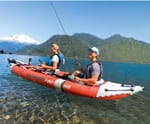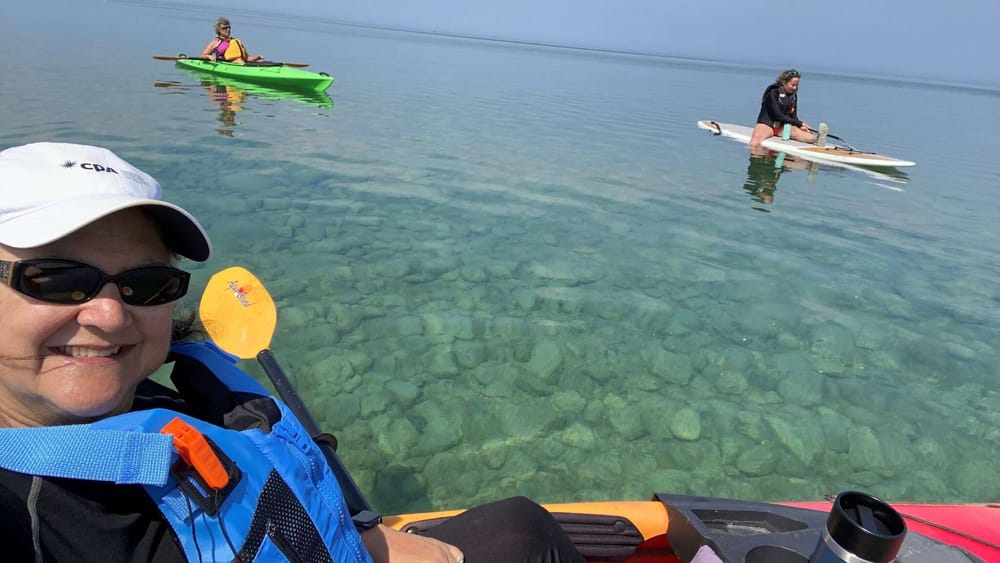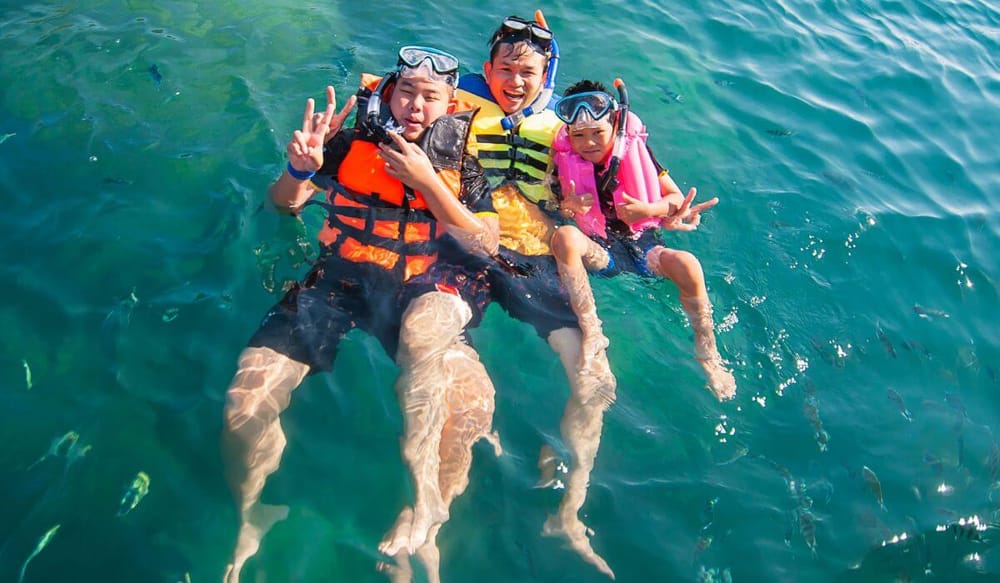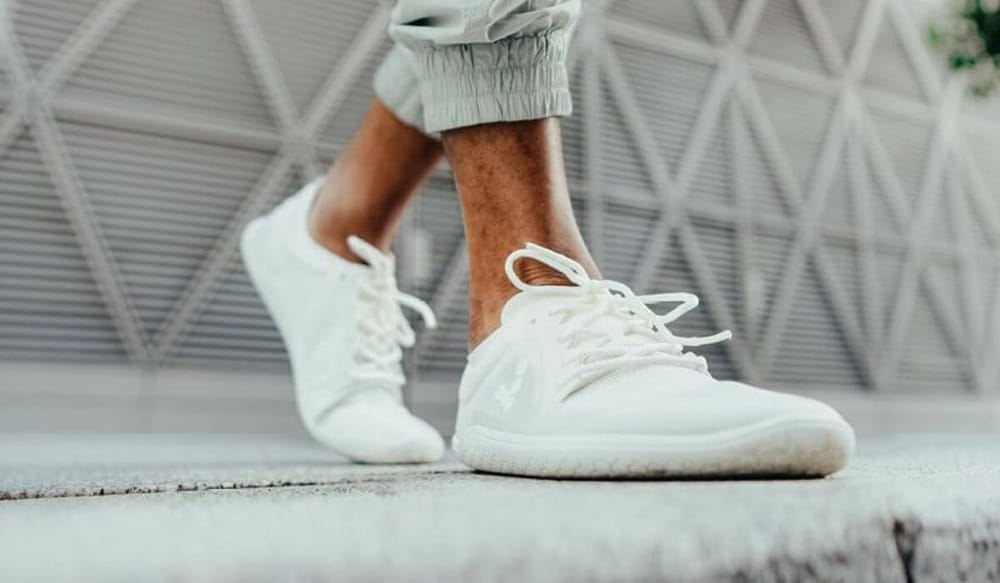Are you ready to dive into the world of water sports, but can't decide between kayaking and paddle boarding?
You're not alone!
Both activities offer unique experiences and challenges, making them popular choices for outdoor enthusiasts.
In this blog post, we will navigate the kayak vs paddle board debate, exploring the differences, similarities, and factors that can influence the difficulty of each activity, including the question: “is kayak or paddle board harder?”
By the end, you'll have a clearer perspective on which water sport might be best suited for you and your specific needs.
Key Takeaways
- Paddle boarding and kayaking both offer unique challenges & rewards.
- Equipment, techniques, water conditions & individual skill levels affect difficulty.
- Beginner tips include choosing the right equipment, learning proper technique and practicing in safe conditions for a successful experience!
Paddle Boarding vs. Kayaking: Understanding the Basics
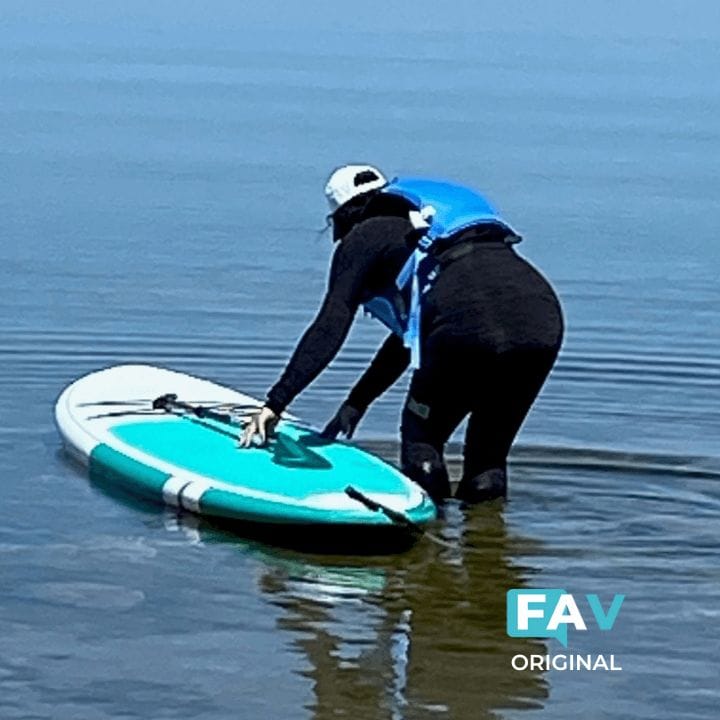
Founder of FAV Reviews heads out onto Lake Huron her Adventure Paddle Board
Paddle boarding and kayaking are often at the center of a friendly rivalry among water sports enthusiasts. Which one is harder? Which one offers a better workout? The truth is, both kayaks and paddle boarding activities have their unique challenges and rewards.
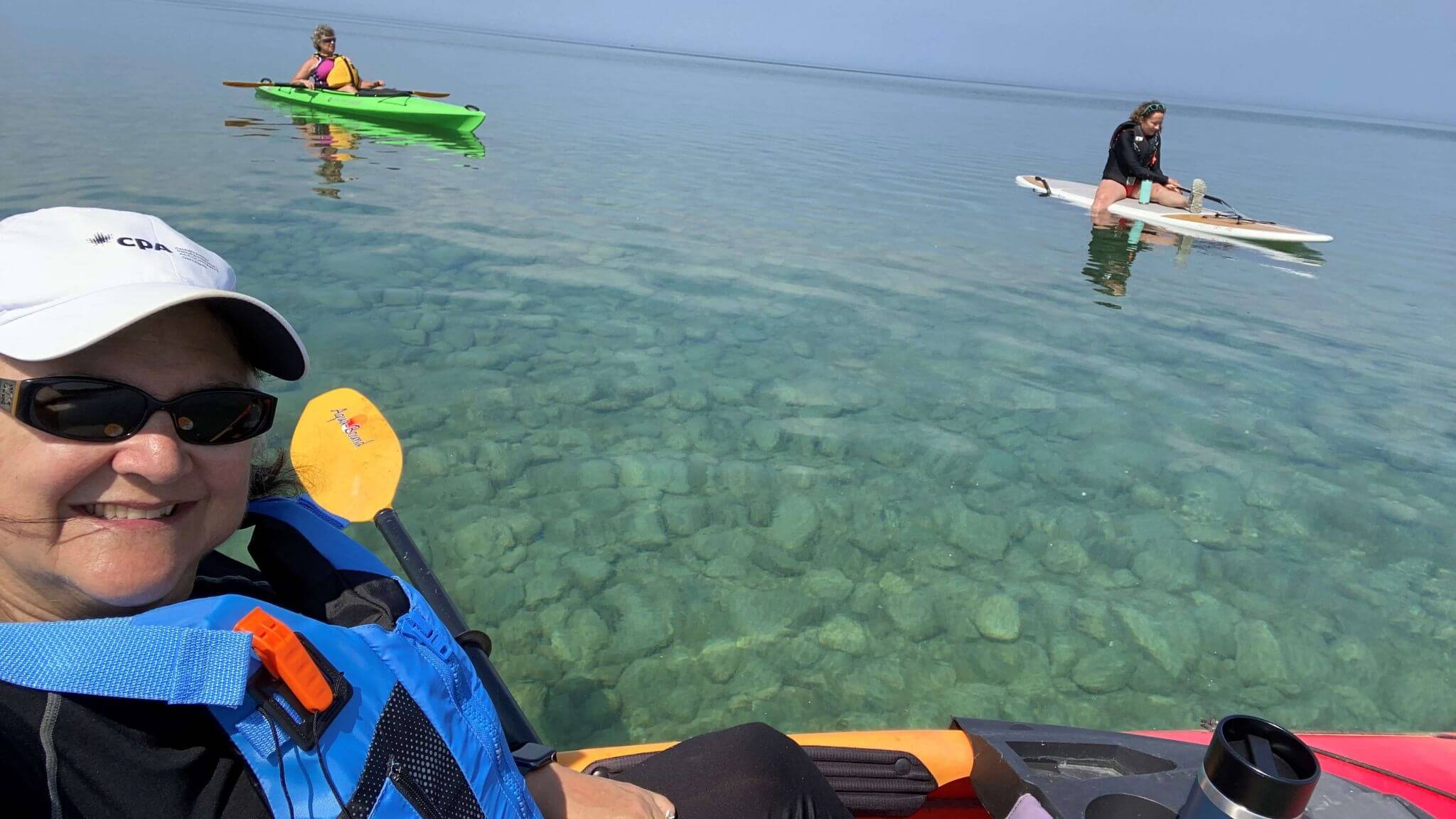
Paddleboarding vs Kayaking which is harder?
First, choosing the right board or kayak for your needs is important so you are making your decision based on similar types of equipment.
- For example: If you are a beginner, be sure to compare an all-around beginner paddleboard and a wider kayak, these will provide the most stable experience.
Once you are comparing a similar stability in a board or kayak, you can determine which is harder for you personally.
Here are some things to note:
- you need to have good balance to stand up on a paddle board. Once you master the balance, with a good All-Arounder paddle board (I LOVE my Adventure Board because it's stable on the water and I can carry in/out of the water myself) you'll enjoy paddleboarding as it offers a lot of flexibility, to paddle standing, paddle from your knees or sitting on the top of the board paddling. So while out on the water you can actually reposition yourself and move around on the board.
- you need to have good flexibility to get down low to get in or out of a kayak. With a good starter kayak (I like the Wilderness Pungo Kayaks) you will enjoy the stability of the ride, ease of paddling or even just sitting still on the water without feeling tippy. The caveat with a kayak, is they can be tricky to get into. They are low and you sit down in them, so you need some flexibility to be able to handle the getting in and out of the sitting area of a kayak. But, with the right kayak, and comfortable sitting position you can be out on the water for hours without getting tired, because you can literally sit and float when you want a rest.
I do enjoy both paddleboarding and kayaking, to answer the question directly, which is harder? For me personally, it's paddleboarding. Balance is key, and I find paddleboarding requires strong legs and core muscles to stay out on the water for any length of time. If you add some ripples and waves, balance can get tricky paddleboarding, especially on the lake.
So conversely, my answer to which is easier kayaking or paddleboarding? I believe, with a good stable kayak, kayaking is easier. I can safely stay out on the water longer and go farther in a good quality, stable kayak.
We cover the basics of each activity in this section, exploring equipment, techniques, and learning curves. Let’s explore the world of paddle boards and kayaks to see how they compare.
Equipment Differences
One of the first differences you’ll notice between kayaking and paddle boarding is the equipment used, making the “paddle board vs kayak” decision an important one.
Inflatable kayaks and hard-shell kayaks are typically designed to be stable and maneuverable in various water conditions, you can sit down in kayaks or have a sit on top kayak.
Inflatable paddle boards are particularly popular due to their affordability, ease of use, and transportability. They are great for beginners and can be easily carried to different locations.
Paddle boards, can also be rigid or an inflatable stand up paddle board, with a flat surface for standing or sitting. SUP boards are known for their versatility, stability, and the option to switch between standing and sitting, making them ideal for activities like fishing, touring, fitness, and family fun.
For those who want the best of both worlds, a paddle board kayak hybrid might be the perfect solution. That's adding a SUP kayak seat, transforming a paddleboard into a sit-on-top kayak, offering versatility and comfort.
Storage Space
Kayaks offer more storage space for gear and often come equipped with rod holders, making them a popular choice for activities like kayak fishing. Paddle boards have limited onboard storage, so you’ll need to invest in waterproof dry bags to protect your belongings.
Paddles for SUP and Kayaking
When it comes to paddles, kayakers use double-bladed paddles, while paddle boarders use single-bladed paddles with a long paddle shaft and angled blade.
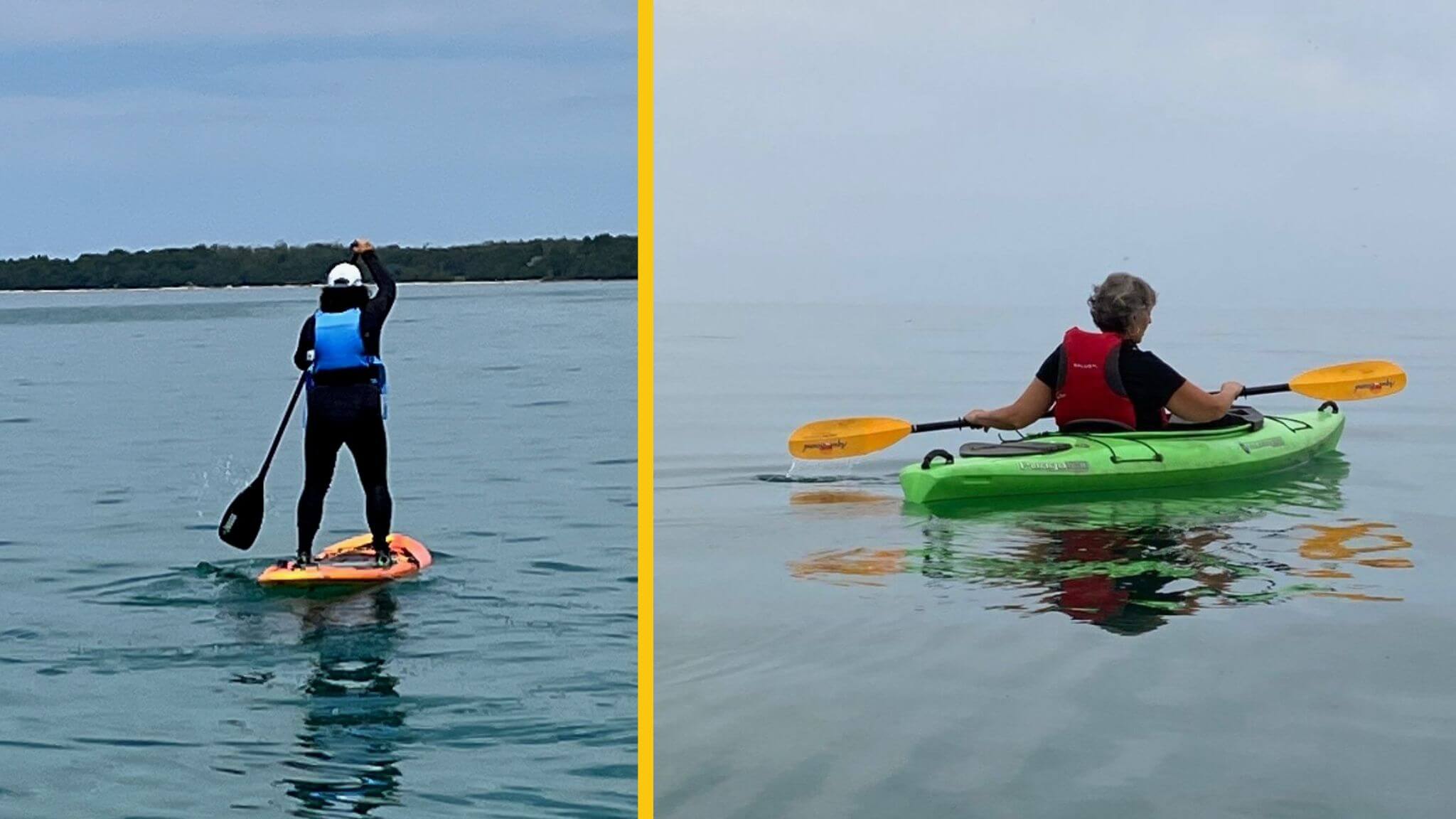
This difference in paddle design reflects the distinct techniques and skills required for each activity. Therefore, the correct equipment is key to a successful and enjoyable experience, whether you’re planning a leisurely paddle on a calm lake or an adrenaline-pumping adventure down a whitewater river.
Techniques and Skills
Paddle boarding and kayaking require different techniques and skills, which can impact the difficulty of each activity. In paddle boarding, balance is key, as you'll need to maintain stability while standing or kneeling on the board. Proper body positioning and efficient use of the paddle blade are also crucial for effective paddling and maneuvering.
On the other hand, kayaking focuses more on upper body strength and paddling technique, with the double-bladed paddle providing propulsion and steering.
While both activities offer a full-body workout, the specific muscle groups targeted and the overall intensity of the workout can vary. Paddleboarding works the core, shoulders, and arms, while kayaking targets the upper body muscles, including the back, arms, and shoulders.
With improved skills and increased confidence, you'll discover that both activities offer equally satisfying challenges and rewards.
Learning Curve
When comparing the learning curve of kayaking and paddle boarding, many beginners find kayaking easier to pick up initially. The seated position in a kayak offers more stability, and mastering basic paddling techniques can be more straightforward. However, challenges can arise when learning how to re-enter a kayak after capsizing or navigating rough water conditions.
Paddleboarding, on the other hand, can be more challenging for newcomers due to the need for balance and the different paddling techniques required. Standing on a paddle board requires good core strength and coordination, and learning efficient paddle strokes can take some practice. Despite the steeper learning curve, many beginners find paddle boarding to be a rewarding and exhilarating experience once they become comfortable with the basics.
Factors Affecting Difficulty
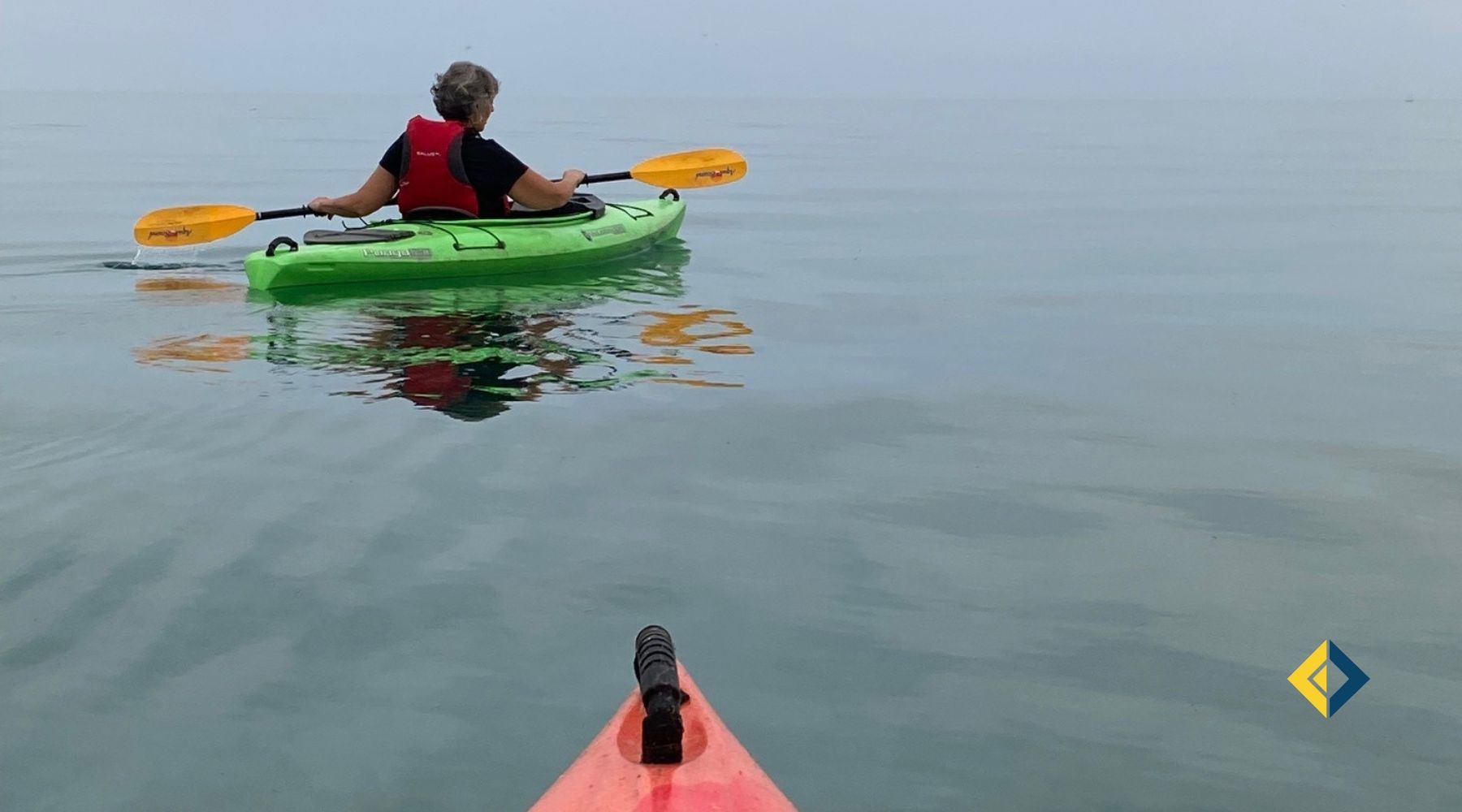
With a solid grasp of the fundamentals of kayaking and paddle boarding, we can now examine the factors that determine the difficulty level of each activity. Water conditions, weather, and individual skill levels all play a role in determining how challenging kayaking and paddle boarding can be. Paddleboarding, in particular, offers a fantastic experience for warm weather paddling, allowing you to easily cool off and enjoy lake breezes.
We’ll delve into each of these factors in the following subsections, shedding light on their impact on your water experience.
Water Conditions
Water conditions can have a significant impact on the difficulty of both kayaking and paddle boarding. For instance, waves, currents, and water depth can present unique challenges for each activity. Kayaking in rough water requires skill and experience to maintain stability and control, while paddle boarding in choppy conditions can test your balance and agility.
As a beginner, one should start practicing in calm, shallow waters before moving on to more challenging conditions. Flat water paddling is an excellent starting point for building your skills and confidence, allowing you to gradually progress to more adventurous environments.
Remember, safety should always be your top priority when exploring new water conditions.
Weather
Weather conditions, such as wind and temperature, can also play a role in the difficulty of kayaking and paddle boarding. Here are some factors to consider.
- Windy conditions can make it challenging to maintain balance on a paddle board and can affect the stability of a kayak, especially for beginners.
- Temperature is another factor to consider, as cold weather can pose additional challenges, such as wearing appropriate clothing and staying warm during your adventure.
- A sit-inside kayak can provide some protection from the elements, making it a more suitable option for cold weather paddling.
Checking the weather forecast before setting out for a kayaking or paddle boarding session and adjusting your plans as required is crucial. Always be prepared for changing conditions and dress appropriately for the temperature and expected weather.
Individual Skill Levels
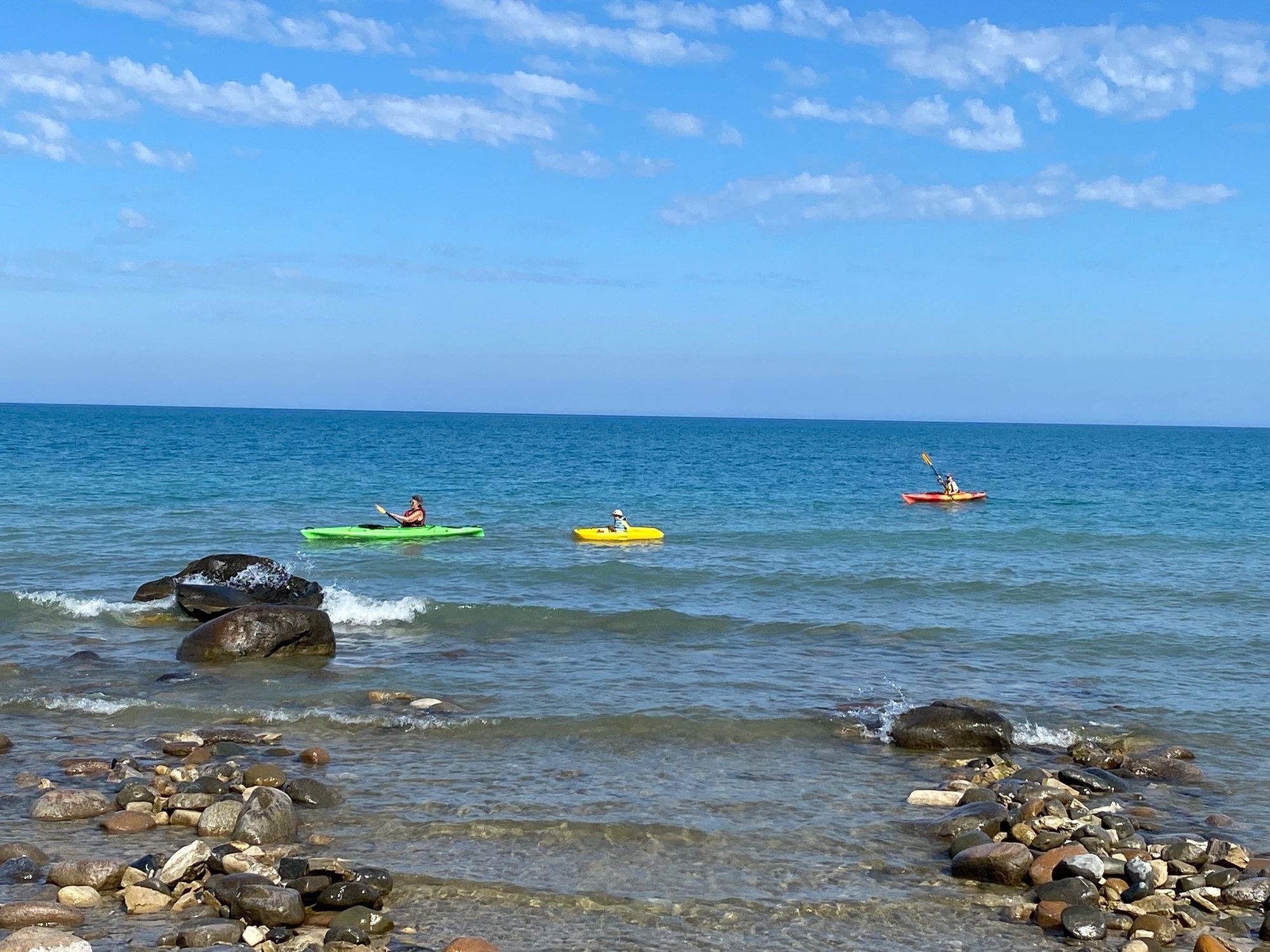
Your experience, fitness level, and familiarity with water sports can significantly impact the perceived difficulty of kayaking and paddle boarding. Experienced kayakers and paddle boarders have developed the necessary skills to navigate various water conditions and weather challenges, making the activities seem less difficult. Your fitness level can also play a role, as stronger and more physically fit individuals may find it easier to paddle for extended periods, allowing them to better handle challenging conditions.
With growing experience and enhanced skills, you'll notice a decrease in the difficulty level of both activities. This will enable you to handle more challenging water conditions and enjoy a heightened sense of achievement. Practicing regularly and seeking guidance from experienced paddlers or instructors can help you develop the necessary skills and confidence to excel in both beginner kayaking and paddle boarding.
Fitness Benefits and Challenges: A Full Body Workout
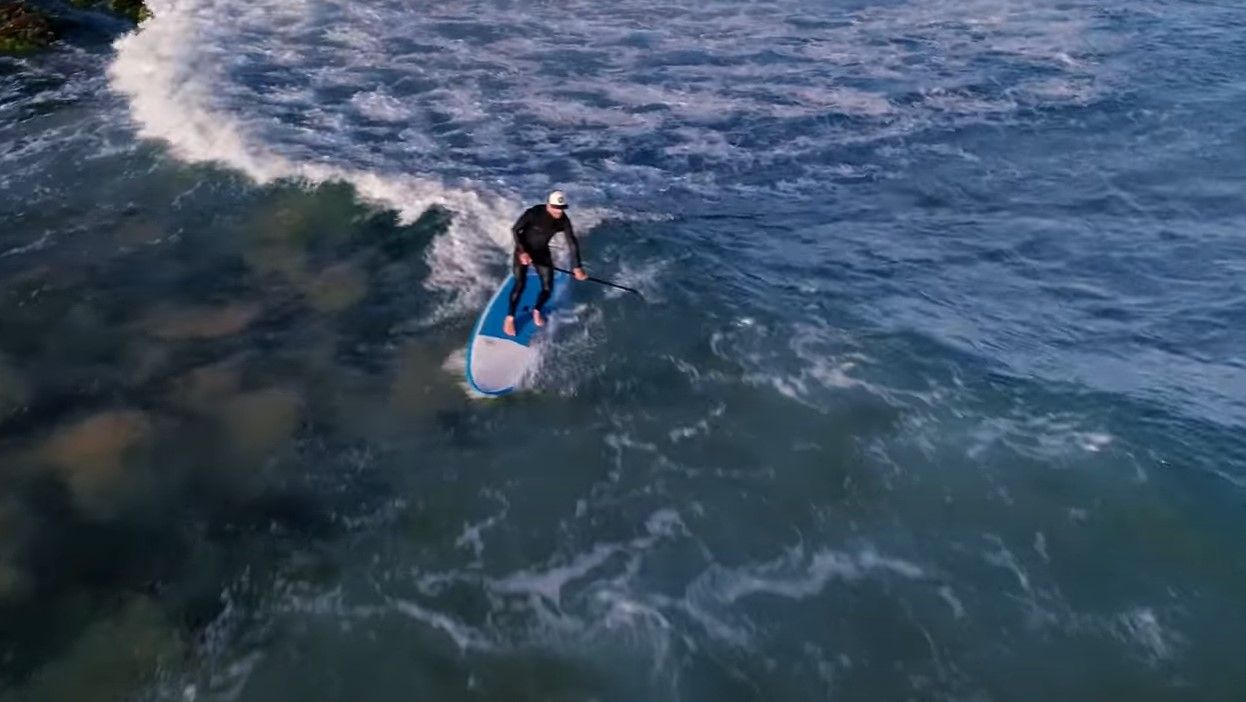
Kayaking, kayak paddling, and paddle boarding are not only enjoyable outdoor activities, but also excellent forms of exercise. Both activities, including paddle board fishing, provide a range of fitness benefits and challenges, targeting different muscle groups and offering varying levels of workout intensity. Recreational kayaks and paddle boards are perfect for those looking to enjoy these activities.
We will examine the fitness benefits of kayaking and paddle boarding in greater detail in this section, comparing the targeted muscle groups, calorie burn, and overall workout intensity.
Muscle Groups Targeted
Both kayaking and paddle boarding engage various muscle groups throughout the body, providing a full-body workout. Kayaking primarily targets the upper body muscles, including the arms, shoulders, and back, as well as the core muscles for stability.
Paddleboarding, on the other hand, works the entire body, engaging the core, arms, shoulders, and even the glutes for balance and propulsion. This difference in muscle engagement means that each activity can offer unique fitness benefits, depending on your goals and preferences.
For example, if you're looking to develop upper body strength and endurance, kayaking may be a better fit. However, if you're seeking a more comprehensive full-body workout, paddle boarding could be the way to go.
Calorie Burn
Another key fitness consideration is the number of calories burned during each activity. Kayaking can burn up to 400 calories per hour, depending on factors such as speed, distance, and resistance.
Paddle boarding, on the other hand, can burn up to 600 calories per hour, making it a more intense workout option. The higher calorie burn associated with paddle boarding can be attributed to the greater engagement of the entire body and the added challenge of maintaining balance on the board.
If your primary fitness goal is weight loss or increased calorie expenditure, paddle boarding may be the more effective choice.
Workout Intensity
The overall workout intensity of kayaking and paddle boarding can vary greatly, depending on factors such as balance, endurance, and strength. Kayaking can provide a moderate to high-intensity workout, as the upper body and core muscles are continuously engaged throughout the paddling motion. Paddleboarding, on the other hand, can offer a more intense workout due to the added challenge of maintaining balance while standing on the board and the full-body engagement required for effective paddling.
Paddle Board Yoga is also becoming popular, taking workouts to a whole new level with paddleboards
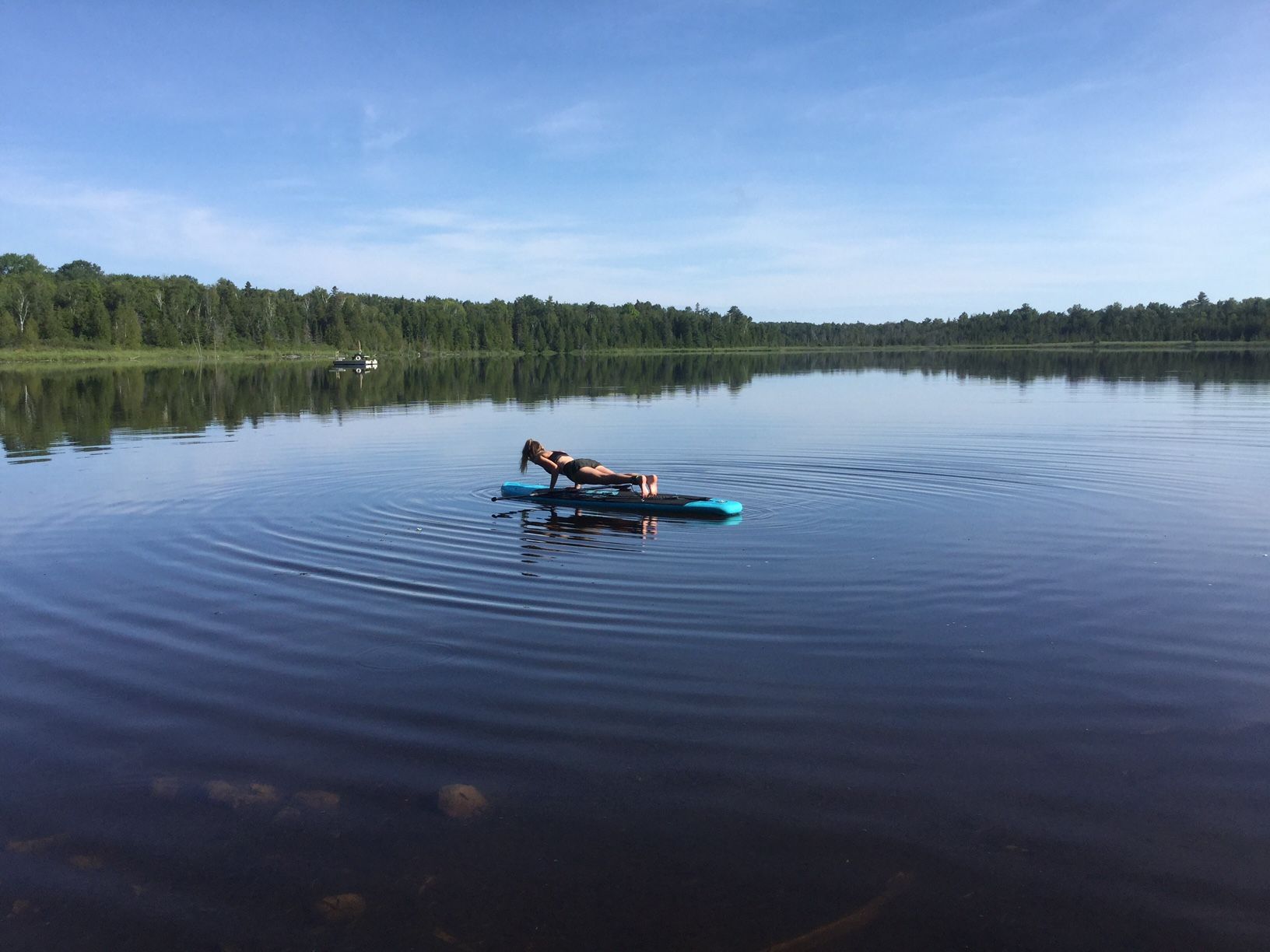
Ultimately, the workout intensity of each activity will depend on your individual skill level, fitness goals, and personal preferences. As you gain experience and improve your technique, you'll be able to tailor your workouts to achieve the desired intensity and challenge.
Safety Considerations
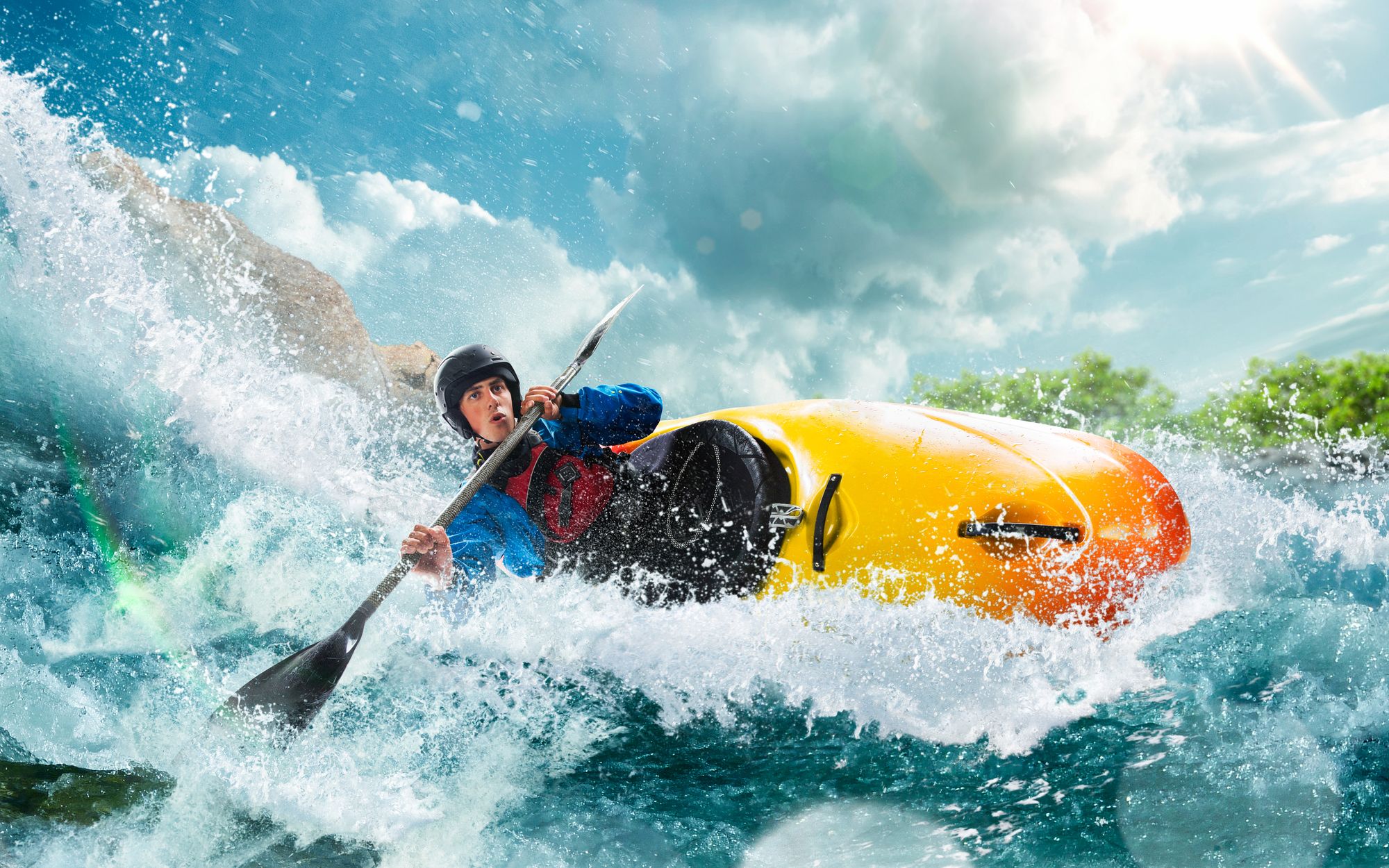
Safety should always be a top priority when engaging in any water sport, including kayaking and paddle boarding. This section will address the safety aspects of both activities, touching upon potential hazards, injury risks, and safety gear.
Understanding the safety considerations associated with kayaking and paddle boarding can help you make informed decisions about which activity is best suited for your needs and abilities.
Potential Hazards
Common hazards associated with kayaking and paddle boarding include:
- Capsizing in rough water conditions or as a result of improper technique
- Collisions due to limited visibility or inattention
- Obstacles in the water
- Maintaining balance on the board and avoiding falls
To mitigate these hazards, it's essential to practice proper technique, be aware of your surroundings, and choose appropriate equipment for the conditions. As a beginner, start in calm, shallow waters, and gradually progress to more challenging environments as your skills improve.
Injury Risks
Injury risks for kayaking and paddle boarding include strains, sprains, and impact injuries resulting from falls or collisions. Both activities require significant physical effort, making it essential to warm up properly and practice good technique to minimize the risk of injury.
To reduce the likelihood of injury, always wear appropriate safety gear, such as a personal flotation device and helmet, and follow best practices for paddling and balancing. If you're new to kayaking or paddle boarding, consider taking lessons from a qualified instructor or seeking guidance from experienced paddlers to ensure you're using proper technique and avoiding common mistakes.
Safety Gear
Safety gear is crucial for both kayaking and paddle boarding to minimize the risk of injury and ensure a safe and enjoyable experience on the water. Essential safety equipment includes a personal flotation device, helmet, and leash (for paddle boarding). Additional gear, such as a whistle, tow bag, and rescue throw rope, can also be beneficial in case of emergencies.
When selecting camping gear, especially safety equipment, make sure it is appropriate for your chosen activity and fits comfortably. Investing in quality gear and maintaining it properly will ensure that it performs effectively when needed, providing you with peace of mind while out on the water.
Beginner Tips for Kayaking and Paddle Boarding
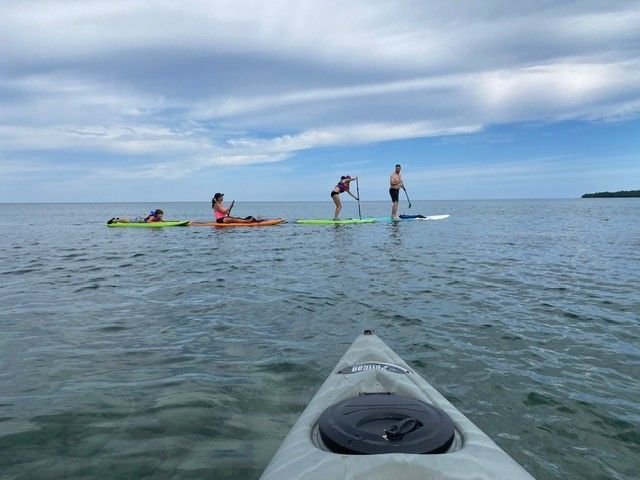
If you’re a beginner looking to try kayaking or paddle boarding, you may be wondering where to start and how to ensure a successful experience. For those interested in fishing, a fishing kayak offers gear storage and comfort, making it an excellent choice for beginners. This section will provide advice on selecting suitable equipment, mastering proper techniques, and practicing under safe conditions.
With these tips in mind, you’ll be well-equipped to embark on your kayaking or stand up paddle board journey, also known as paddle boarding.
Choosing the Right Equipment
Selecting the appropriate equipment is essential for a successful and enjoyable kayaking or paddle boarding experience. When choosing a kayak or paddle board, consider factors such as size, weight capacity, and your skill level. Research the various types of kayaks and paddle boards available, and seek guidance from experienced paddlers or retailers to find the right fit for your needs.
In addition to choosing the right kayak or paddle board, ensure you have the necessary accessories, such as a kayak paddle, life jackets, and a comfortable kayak seat. Investing in quality equipment that is suited to your needs will not only enhance your experience, but also contribute to your safety and success on the water.
Learning Proper Techniques
Mastering proper paddling and balancing techniques is crucial for both kayaking and stand up paddle boarding. Learning correct form and efficient paddle strokes will not only help you navigate the water safely, but will also improve your overall experience and enjoyment of the activity.
Consider taking lessons from a qualified instructor or enrolling in a paddling course to learn the fundamentals of each activity. Online resources, such as instructional videos and tutorials, can also be valuable tools for mastering proper technique. Practice your skills in a safe environment, such as a pool or calm lake, before venturing into more challenging conditions.
Practicing in Safe Conditions
Safety should always be a top priority when learning any new water sport, including kayaking and paddle boarding. Here are some tips to ensure your safety:
- Start by practicing in calm, shallow waters, away from strong currents and potentially dangerous obstacles.
- As your skills and confidence improve, gradually progress to more challenging conditions.
- Always be mindful of your abilities and limitations.
In addition to practicing in safe conditions, always wear appropriate safety gear, such as a personal flotation device and helmet, and be aware of your surroundings. By following these guidelines and prioritizing safety, you'll be well on your way to enjoying a successful and rewarding kayaking or paddle boarding experience.
Both are Popular Choices for Outdoor Enthusiasts
In conclusion, both kayaking and paddle boarding offer unique challenges and rewards, making them popular choices for outdoor enthusiasts. By understanding the fundamental differences between the two activities, as well as the factors that can influence their difficulty, you'll be better equipped to choose the one that best suits your needs and preferences. Whether you're seeking a leisurely, scenic paddle or an adrenaline-pumping workout, both kayaking and paddle boarding can provide unforgettable experiences on the water.
So, what are you waiting for? Grab your paddle, strap on your life jacket, and embark on an adventure that will challenge your skills, strengthen your body, and connect you with the beauty of the great outdoors.
The water is calling – will you answer with a kayak or a paddle board?
Happy Paddling!
Your FavReviews (Paddling) Team
P.S. - You may also like some of our other articles about Paddle Boarding and Kayaking
- Epic Adventures start with an Adventure Paddle Board
- Swim, Paddle and Cruise: Find the best Inflatable Paddle Board for Your Travels
- Best Paddle Board for Beginners | Adventure All Rounder
- 3 Essentials You Need to Start Kayaking - Beginners Guide
- Kayaking for Older Adults: What to Look For
Frequently Asked Questions
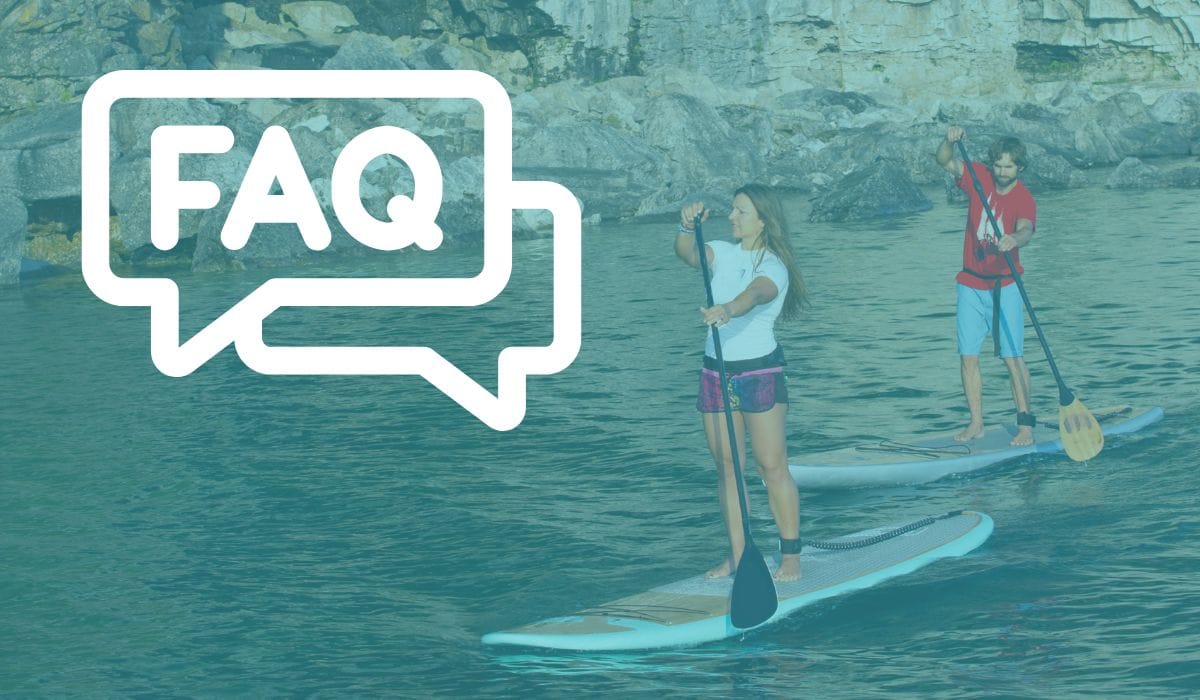
Is kayaking or paddleboarding a better workout?
Stand up paddleboarding (SUP) is a better workout than kayaking as it utilizes more muscle groups and gives your arms and legs a workout.
Kayaking only works your arms while SUP engages the abs, triceps, biceps, quads and back muscles, so SUP wins for a better workout.
How hard is kayaking for beginners?
Kayaking is a great beginner-friendly activity, as long as you have proper instruction before hitting the water. You’ll be up and running in no time, but make sure to take extra precautions when kayaking in harsh conditions.
It’s important to be aware of the weather and water conditions before you go out. Make sure to check the forecast and be prepared for any changes in the weather. Wear a life jacket and bring a water bottle.
Are paddle boards as fast as kayaks?
Generally, kayaks offer a slight speed advantage over paddle boards. However, considering the versatility of paddle boards, the difference in speed may not be a deciding factor for many paddlers.
What factors can influence the difficulty of kayaking and paddle boarding?
The difficulty of kayaking and paddle boarding can be impacted by various factors such as water conditions, weather, and skill level.
For example, if the water is choppy, it can be more difficult to stay on course. Additionally, if the weather is windy, it can be difficult to paddle against the wind. Lastly, if the answer is yes, the answer is no.
What safety gear should I wear for kayaking and paddle boarding?
For kayaking and paddle boarding, it’s important to wear a personal flotation device, helmet, and leash (for paddle boarding).
These items are essential for safety and should be worn at all times while on the water.
Deborah Clarke, a retired marketing director turned founder of FAV Reviews in 2022, is on a mission to help outdoorsy families who love the lake to find quality products for all things lakeside living.
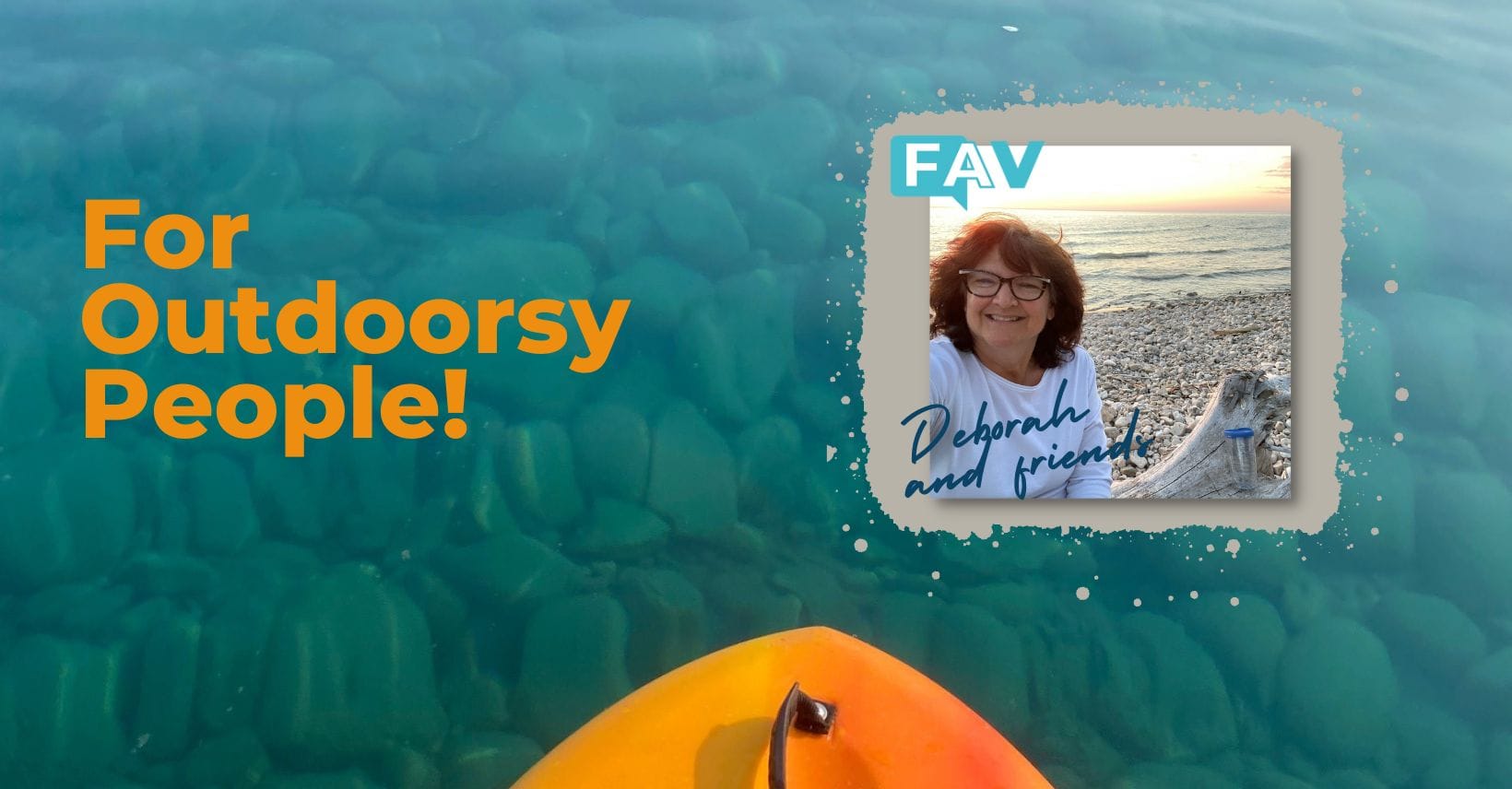
As a nature enthusiast and avid adventurer myself, I understand the importance of finding the perfect products to enhance your outdoor experiences by the lake. From family-friendly gear for lakeside picnics to eco-conscious essentials for sustainable living, I'm here to help you make the most of your time in nature.
Join me as we explore the serene beauty and recreational opportunities that lakeside living has to offer, one review at a time. Let's make every moment by the water's edge count!
Online purchases are nearly a daily occurrence with young families, from recreational and sports gear, to personal and household products to groceries. Any way we can help young families get to the quality products they are looking for faster, is a bonus. - Deborah Clarke
For lake-loving families, outdoor enthusiasts, and nature lovers alike. We want FAV Reviews to be your ultimate destination for discovering quality reviews for products you and your family need to enhance your lakeside lifestyle.
- From boating and water sports gear like kayaks and fishing equipment to outdoor recreation equipment such as hiking boots and camping tents, we've got you covered.
- Dive into our selection of outdoor apparel and accessories, including swimwear and sun hats, or explore our range of picnic and outdoor dining supplies for lakeside picnics and gatherings.
- Transform your lakeside home and garden with our selection of outdoor furniture, solar-powered lights, fire pits and all the comforts of home.
- All while staying eco-conscious with our environmental conservation products like reusable water bottles and eco-friendly sunscreen.
With FAV Reviews, we've done the research for you, so you can elevate your lake experience and embrace the beauty of outdoor living confidently and responsibly.
Why Trust Us?
We hope you find your next favorite thing from FavReviews! We are a family friendly product review site.
Four Generation Family: As a four generation family, the breadth of products we consume and review as brand ambassadors is vast. But we can tell you, in general, in we love the outdoors, sports, staying active, living healthy and celebrating the changing seasons.
Trending Products: We also love finding new trending products and we are happy to pass along our research of new trending products to you. Follow us so you don't miss out on a thing! We send out cool emails with our latest reviews, and we will never sell or misuse your information.
Opinions Based on Use, Research and Reviews: Each product we write about is independently selected by our editors. All opinions in this article are our own, based on our own use of the product(s), or hours of research and reading reviews. We will never recommend something we wouldn't use ourselves in our own family.
Compensation: Yes, FavReviews may collect a share of sales or other compensation from the links on this page if you decide to buy something (that's how we stay in business). But, the product never costs you more, in fact in some cases, we hope we might help save you money based on our recommendations.
Reviews have been edited for length and clarity. Enjoy finding your next favorite thing!
Happy Shopping!
Your FavReviews Team
____________________________________________________
BEHIND the SCENES LOOK: If you’d like to learn how to start your own product review blog, with products that you love, check out our article How to Become a Brand Ambassador or visit LearnWriteLive.com There is room for all of us to provide better service to online shoppers. What's your passion?

